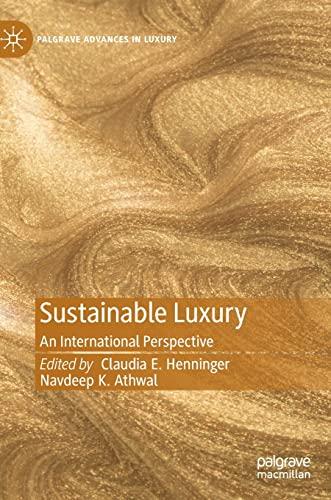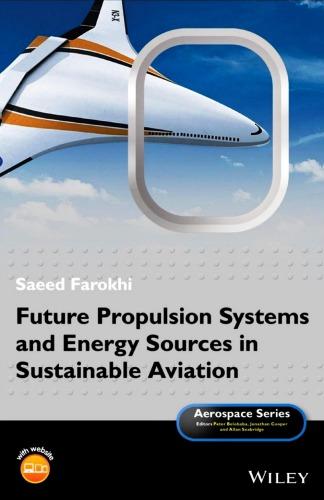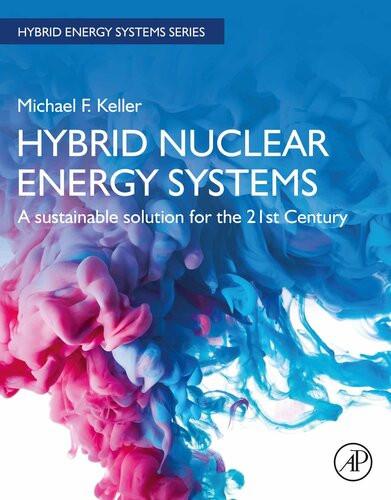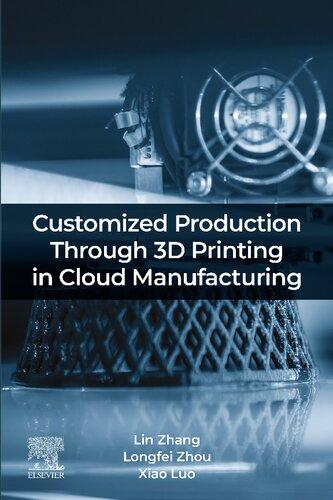SustainableManufacturingSystems
AnEnergyPerspective
LinLi
UniversityofIllinoisatChicago Chicago,IL,USA
MengChuZhou UniversityHeights Newark,NJ,USA
IEEEPressSeriesonSystemsScienceandEngineering
MengChuZhou,SeriesEditor
Copyright©2023byTheInstituteofElectricalandElectronicsEngineers,Inc.Allrightsreserved.
IEEEStandardsdesignationsaretrademarksofTheInstituteofElectricalandElectronics Engineers,Incorporated(http://www.ieee.org/).
Non-IEEEtrademarksaretherespectivepropertyoftheirowners.
PublishedbyJohnWiley&Sons,Inc.,Hoboken,NewJersey. PublishedsimultaneouslyinCanada.
Nopartofthispublicationmaybereproduced,storedinaretrievalsystem,ortransmittedinany formorbyanymeans,electronic,mechanical,photocopying,recording,scanning,orotherwise, exceptaspermittedunderSection107or108ofthe1976UnitedStatesCopyrightAct,without eitherthepriorwrittenpermissionofthePublisher,orauthorizationthroughpaymentofthe appropriateper-copyfeetotheCopyrightClearanceCenter,Inc.,222RosewoodDrive,Danvers, MA01923,(978)750-8400,fax(978)750-4470,oronthewebatwww.copyright.com.Requeststo thePublisherforpermissionshouldbeaddressedtothePermissionsDepartment,JohnWiley& Sons,Inc.,111RiverStreet,Hoboken,NJ07030,(201)748-6011,fax(201)748-6008,oronlineat http://www.wiley.com/go/permission.
Trademarks:WileyandtheWileylogoaretrademarksorregisteredtrademarksofJohnWiley& Sons,Inc.and/oritsaffiliatesintheUnitedStatesandothercountriesandmaynotbeused withoutwrittenpermission.Allothertrademarksarethepropertyoftheirrespectiveowners. JohnWiley&Sons,Inc.isnotassociatedwithanyproductorvendormentionedinthisbook.
LimitofLiability/DisclaimerofWarranty:Whilethepublisherandauthorhaveusedtheirbest effortsinpreparingthisbook,theymakenorepresentationsorwarrantieswithrespecttothe accuracyorcompletenessofthecontentsofthisbookandspecificallydisclaimanyimplied warrantiesofmerchantabilityorfitnessforaparticularpurpose.Nowarrantymaybecreatedor extendedbysalesrepresentativesorwrittensalesmaterials.Theadviceandstrategiescontained hereinmaynotbesuitableforyoursituation.Youshouldconsultwithaprofessionalwhere appropriate.Neitherthepublishernorauthorshallbeliableforanylossofprofitoranyother commercialdamages,includingbutnotlimitedtospecial,incidental,consequential,orother damages.Further,readersshouldbeawarethatwebsiteslistedinthisworkmayhavechangedor disappearedbetweenwhenthisworkwaswrittenandwhenitisread.Neitherthepublishernor authorsshallbeliableforanylossofprofitoranyothercommercialdamages,includingbutnot limitedtospecial,incidental,consequential,orotherdamages.
Forgeneralinformationonourotherproductsandservicesorfortechnicalsupport,pleasecontact ourCustomerCareDepartmentwithintheUnitedStatesat(800)762-2974,outsidetheUnited Statesat(317)572-3993orfax(317)572-4002.
Wileyalsopublishesitsbooksinavarietyofelectronicformats.Somecontentthatappearsinprint maynotbeavailableinelectronicformats.FormoreinformationaboutWileyproducts,visitour websiteatwww.wiley.com.
LibraryofCongressCataloging-in-PublicationDataappliedfor HardbackISBN:9781119578246
CoverDesign:Wiley CoverImages:©AlekseyPopov
Setin9.5/12.5ptSTIXTwoTextbyStraive,Pondicherry,India
Contents
AuthorBiography xv
Preface xvii
Acknowledgments xxiii
ListofFigures xxv
PartIIntroductionstoEnergyEfficiencyinManufacturingSystems 1
1Introduction 3
1.1DefinitionsandPracticesofSustainableManufacturing 3
1.1.1CurrentStatusofManufacturingIndustry 3
1.1.2SustainabilityintheManufacturingSectorandAssociatedImpacts 5
1.1.3SustainableManufacturingPractices 10
1.2FundamentalofManufacturingSystems 12
1.2.1StagesofProductManufacturing 12
1.2.2ClassificationofManufacturingSystems 13
1.2.2.1JobShop 13
1.2.2.2ProjectShop 14
1.2.2.3CellularSystem 15
1.2.2.4FlowLine 15
1.2.2.5ContinuousSystem 15
1.3ProblemStatementandScope 18 Problems 19 References 19
2EnergyEfficiencyinManufacturingSystems 23
2.1EnergyConsumptioninManufacturingSystems 23
2.1.1EnergyandPowerBasics 23
2.1.2EnergyGeneration 24
2.1.2.1PrimaryEnergy 25
Contents
2.1.2.2SecondaryEnergy 27
2.1.3EnergyDistribution 27
2.1.3.1Electricity 28
2.1.3.2Steam 30
2.1.3.3CompressedAir 30
2.1.4EnergyConsumption 31
2.1.4.1IndirectEndUse 33
2.1.4.2DirectProcessEndUse 33
2.1.4.3DirectNon-processEndUse 34
2.2EnergySavingPotentialsandEnergyManagementStrategiesfor ManufacturingSystems 35
2.2.1MachineLevel 39
2.2.1.1IntrinsicCharacteristicsofMachineTools 41
2.2.1.2ProcessingConditions 42
2.2.2SystemLevel 43
2.2.2.1InhomogeneousSystem 44
2.2.2.2MachineMaintenance 45
2.2.3PlantLevel 46
2.2.3.1IndirectEndUse 46
2.2.3.2DirectNon-processEndUse 47
2.3Demand-sideEnergyManagement 49
2.3.1ElectricityBillComponents 50
2.3.1.1ElectricityCost 51
2.3.1.2DemandCost 51
2.3.1.3FixedCost 52
2.3.2EnergyEfficiencyPrograms 52
2.3.3DemandResponsePrograms 55
2.3.3.1Incentive-basedPrograms 56
2.3.3.2PriceBaseOptions 57 Problems 59 References 59 PartIIMathematicalToolsandModelingBasics 65
3MathematicalTools 67
3.1Probability 67
3.1.1FundamentalsofProbabilityTheory 67
3.1.1.1BasicsofProbabilityTheory 67
3.1.1.2AxiomsofProbabilityTheory 69
3.1.1.3ConditionalProbabilityandIndependence 72
3.1.1.4TotalProbabilityTheorem 73
3.1.1.5Bayes’ Law 74
3.1.2RandomVariables 74
3.1.2.1DiscreteRandomVariables 75
3.1.2.2ContinuousRandomVariables 82
3.1.3RandomProcess 88
3.1.3.1Discrete-timeMarkovChain 89
3.1.3.2Continuous-timeMarkovChain 92
3.2PetriNet 94
3.2.1FormalDefinitionofPetriNet 95
3.2.1.1DefinitionofPetriNet 95
3.2.2ClassicalPetriNet 99
3.2.2.1StateMachinePetriNet 101
3.2.2.2MarkedGraph 102
3.2.2.3SystematicModelingMethods 105
3.2.3DeterministicTimedPetriNet 106
3.2.4StochasticPetriNet 109
3.3OptimizationMethods 113
3.3.1FundamentalsofOptimization 113
3.3.1.1ObjectiveFunction 114
3.3.1.2DecisionVariables 114
3.3.1.3Constraints 115
3.3.1.4LocalandGlobalOptimum 116
3.3.1.5Near-optimalSolutions 117
3.3.1.6Single-objectiveandMulti-objectiveOptimization 117
3.3.1.7DeterministicandStochasticOptimization 118
3.3.2GeneticAlgorithms 119
3.3.2.1Initialization 119
3.3.2.2Evaluation 121
3.3.2.3Selection 121
3.3.2.4Crossover 123
3.3.2.5Mutation 124
3.3.2.6TerminationCriteria 125
3.3.3ParticleSwarmOptimizer(PSO) 126
3.3.3.1Initialization 126
3.3.3.2Evaluation 128
3.3.3.3PersonalandGlobalBestPositions 128
3.3.3.4UpdatingVelocityandPosition 129
3.3.3.5TerminationCriteria 132 Problems 132 References 134
4MathematicalModelingofManufacturingSystems 139
4.1BasicsinManufacturingSystemModeling 139
4.1.1StructureofManufacturingSystems 139
4.1.1.1BasicComponents 139
4.1.1.2StructuralModeling 140
4.1.1.3TypesofManufacturingSystems 141
4.1.2MathematicalModelsofMachinesandBuffers 142
4.1.2.1TimingIssuesforMachines 143
4.1.2.2MachineReliabilityModels 143
4.1.2.3ParametersofAggregatedMachines 145
4.1.2.4MathematicalModelofBuffers 146
4.1.2.5InteractionBetweenMachinesandBuffers 147
4.1.2.6BufferStateTransition 147
4.1.2.7BlockageandStarvation 148
4.1.3PerformanceMeasures 150
4.1.3.1BlockageandStarvation 150
4.1.3.2ProductionRateandThroughput 151
4.1.3.3Work-in-process 151
4.2Two-machineProductionLines 152
4.2.1ConventionsandNotations 152
4.2.1.1Assumptions 152
4.2.1.2Notations 152
4.2.2StateTransition 154
4.2.2.1StateTransitionProbabilities 155
4.2.2.2SystemDynamics 157
4.2.3Steady-stateProbabilities 157
4.2.3.1IdenticalMachines 159
4.2.3.2NonidenticalMachines 160
4.2.4PerformanceMeasures 161
4.2.4.1BlockageandStarvation 161
4.2.4.2ProductionRate 161
4.2.4.3Work-in-process 162
4.3Multi-machineProductionLines 162
4.3.1AssumptionsandNotations 163
4.3.1.1Assumptions 163
4.3.1.2Notations 163
4.3.2StateTransition 164
4.3.2.1StateTransitionProbabilities 165
4.3.2.2SystemDynamics 167
4.3.3PerformanceMeasures 167
4.3.3.1BlockageandStarvation 167
4.3.3.2ProductionRate 168
4.3.3.3Work-in-process 169
4.3.4SystemModelingwithIteration-basedMethod 169
4.4ProductionLinesCoupledwithMaterialHandlingSystems 174
4.4.1AssumptionsandNotations 174
4.4.1.1Assumptions 175
4.4.1.2Notations 175
4.4.2StateTransitionandPerformance 175
4.4.2.1BlockageandStarvation 175
4.4.2.2ProductionRate 176 Problems 179
References 180
5EnergyEfficiencyCharacterizationinManufacturingSystems 181
5.1EnergyConsumptionModeling 181
5.1.1Operation-basedEnergyModeling 182
5.1.2Component-basedEnergyModeling 185
5.1.3System-levelEnergyModeling 188
5.2EnergyCostmodeling 191
5.2.1EnergyCostUnderFlatRate 192
5.2.1.1EnergyConsumptionCost 192
5.2.1.2DemandCost 192
5.2.2EnergyCostUnderTime-of-useRate 196
5.2.2.1EnergyConsumptionCost 196
5.2.2.2DemandCost 198
5.2.3EnergyCostUnderCriticalPeakPrice(CPP) 199
5.2.3.1EnergyConsumptionCost 199
5.2.3.2DemandCost 200 Problems 203 References 203
PartIIIEnergyManagementinTypicalManufacturingSystems 205
6ElectricityDemandResponseforManufacturingSystems 207
6.1Time-of-usePricingforManufacturingSystems 208
6.1.1IntroductiontoTOU 208
6.1.2SurveyofTOUPricinginUSUtilities 209
6.1.3ComparisonofEnergyCostBetweenFlatRateandTOURates 210
6.2TOU-BasedProductionSchedulingforManufacturingSystems 216
6.2.1ManufacturingSystemsModeling 216
x Contents
6.2.2EnergyConsumptionandEnergyCostModeling 218
6.2.3ProductionSchedulingforTOU-basedDemandResponse 219
6.2.3.1ProductionSchedulingProblemFormulation 219
6.2.3.2PSOAlgorithmforNear-optimalSolutions 220
6.2.3.3CaseStudySetup 221
6.2.3.4OptimalProductionSchedules 222
6.3CriticalPeakPricingforManufacturingSystems 228
6.3.1IntroductiontoCriticalPeakPricing(CPP) 228
6.3.2ComparisonofEnergyCostBetweenTOUandCPPRates 229 Problems 234
Appendix3.ASupplementaryInformationofDemandResponse Tariffs 235 References 255
7EnergyControlandOptimizationforManufacturingSystemsUtilizing CombinedHeatandPowerSystem 257
7.1IntroductiontoCombinedHeatandPowerSystem 257
7.2ProblemDefinitionandModeling 258
7.2.1ObjectiveFunction 260
7.2.1.1ElectricityCost 260
7.2.1.2OperationCostfortheCHPSystemandBoiler 261
7.2.2Constraints 262
7.3SolutionApproach 263
7.3.1Initialization 263
7.3.2Evaluation 264
7.3.3UpdatingProcess 265
7.4CaseStudy 266
7.4.1CaseStudySettings 267
7.4.2ResultsandDiscussions 269 Problems 270 References 271
8Plant-levelEnergyManagementforCombinedManufacturingandHVAC System 273
8.1DefinitionandModeling 273
8.1.1ObjectiveFunction 274
8.1.1.1CalculateTEL(t) 276
8.1.1.2Estimate q(t) 278
8.1.2Constraints 279
8.2SolutionApproach 281
8.2.1Initialization 281
8.2.2Evaluation 282
8.2.3UpdatingProcess 282
8.3CaseStudy 283
8.3.1ModelSettings 284
8.3.2ResultsandDiscussions 287 Problems 289 References 290 PartIVEnergyManagementinAdvancedManufacturingSystems 291
9EnergyAnalysisofStereolithography-basedAdditive Manufacturing 293
9.1IntroductiontoAdditiveManufacturing 293
9.1.1IllustrationofMIPSL-basedAMProcess 294
9.2EnergyConsumptionModeling 296
9.2.1EnergyConsumptionofUVCuringProcess 297
9.2.2EnergyConsumptionofBuildingPlatformMovement 298
9.2.3EnergyConsumptionofCoolingSystem 298
9.3Experimentation 298
9.3.1ExperimentDesignMethodology 298
9.3.2ExperimentApparatus 299
9.4ResultsandDiscussions 300
9.4.1BaselineCaseResultsUsingDefaultConditions 300
9.4.2FactorialAnalysisResults 302
9.4.3ProductQualityComparison 305 Problems 308 References 308
10EnergyEfficiencyModelingandOptimizationofCellulosicBiofuel ManufacturingSystem 311
10.1IntroductiontoCellulosicBiofuelManufacturing 311
10.2EnergyModelingofCellulosicBiofuelProduction 313
10.2.1EnergyModelingofBiomassSizeReductionProcess 314
10.2.2EnergyModelingofBiofuelChemicalConversionProcesses 314
10.2.2.1HeatingEnergy 315
10.2.2.2EnergyLoss 316
10.2.2.3ReactionEnergy 317
10.2.2.4EnergyRecovery 320
10.2.2.5TotalEnergyConsumption 321
10.3EnergyConsumptionOptimizationUsingPSO 321
Contents
10.3.1ProblemFormulation 321
10.3.2SolutionProcedures 322
10.3.2.1Initialization 322
10.3.2.2Evaluation 323
10.3.2.3UpdatingProcess 323
10.4CaseStudy 323
10.4.1CaseSettings 324
10.4.2EnergyAnalysisofBaselineCase 324
10.4.2.1EnergyConsumptionBreakdown 324
10.4.3EnergyAnalysisofOptimalResults 327 Problems 328 References 329
11Energy-consumptionMinimizedSchedulingofFlexibleManufacturing Systems 333
11.1Introduction 334
11.2ConstructionofPlace-timedPNforFMSScheduling 335
11.2.1BasicDefinitionsofPN 335
11.2.2Place-timedPNSchedulingModelsofFMS 336
11.3EnergyConsumptionFunctions 338
11.3.1CalculatingtheEarliestFiringTimeofTransitions 339
11.3.2TwoEnergyConsumptionFunctions 340
11.3.2.1EnergyConsumptionFunction E1 341
11.3.2.2EnergyConsumptionFunction E2 341
11.4DynamicProgrammingforSchedulingFMS 344
11.4.1FormulationofDPforFMSs 344
11.4.1.1StatesandStages 344
11.4.1.2StateTransitionEquation 344
11.4.1.3BellmanEquation 345
11.4.2ReachabilityGraphofPNS 345
11.4.3DPImplementationforSchedulingFMS 347
11.5ModifiedDynamicProgrammingforSchedulingFMS 348
11.5.1EvaluationFunctionofTransitionSequences 349
11.5.2HeuristicFunction 350
11.5.3MDPAlgorithmforFMSScheduling 351
11.6CaseStudy 353
11.7Summary 358 Problems 358 References 359
PartVSummariesandConclusions 363
12ResearchTrendsandFutureDirectionsinSustainableIndustrial Development 365
12.1InsightsintoSustainableIndustrialDevelopment 365
12.2EnergyandResourceEfficiencyinManufacturing 366
12.2.1EquipmentDesign 366
12.2.2SmartManufacturing 367
12.3IndustrialSymbiosis 369
12.4SupplyChainManagement 371
12.5CircularEconomy 373
12.6LifeCycleAssessment 376 References 378
Glossary 387 Acronyms 391 Index 393
AuthorBiography
Dr.LinLi joinedtheDepartmentofMechanicalandIndustrialEngineering, UniversityofIllinoisChicagoin2011,andisnowaProfessorinMechanical andIndustrialEngineering.HealsoservesastheDirectorofU.S.Department ofEnergyIndustrialAssessmentCenterandthefoundingDirectoroftheSustainableManufacturingSystemsResearchLaboratoryattheUniversityofIllinoisChicago.HereceivedaB.E.degreeinMechanicalEngineeringfromShanghaiJiao TongUniversityin2001,andanM.S.E.degreeinMechanicalEngineering,an M.S.E.degreeinIndustrialandOperationsEngineering,andaPh.D.degreein MechanicalEngineeringfromtheUniversityofMichigan,AnnArbor,in2003, 2005,and2007,respectively.Hisresearchinterestsincludeenergycontroland electricitydemandresponseofmanufacturingsystems,environmentalsustainabilityofadditivemanufacturingprocesses,cost-effectivecellulosicbiofuelmanufacturingsystem,lithium-ionelectricvehiclebatteryremanufacturingand reliabilityassessment,multi-machinesystemmodelingandthroughputestimation,andintelligentmaintenanceofmanufacturingsystems.Heisarecipientof HaroldA.SimonAwardandUniversityofIllinoisChicagoTeachingRecognition ProgramAward.HeisafoundingmemberofthetechnicalcommitteeofSustainableProductionandServiceAutomationintheIEEERoboticsandAutomation Society,anacademicEditorforjournalSustainability,andwasChairofquality andreliabilitytechnicalcommittee,ASMEManufacturingEngineeringDivision.
Dr.MengChuZhou joinedtheDepartmentofElectricalandComputerEngineering,NewJerseyInstituteofTechnologyin1990,andisnowaDistinguished ProfessorinElectricalandComputerEngineering.Hisinterestsareinintelligent automation,semiconductormanufacturing,AI,Petrinets,InternetofThings, edge/cloudcomputing,andbigdataanalytics.Hehasover1000publications including12books,over700journalpapersincludingover600IEEEtransactions/journal/magazinepapers,31patentsand30book-chapters.Heisthe
foundingEditorofIEEEPressBookSeriesonSystemsScienceandEngineering andEditor-in-ChiefofIEEE/CAAJournalofAutomaticaSinica.Heisfounding Chair/Co-chairofTechnicalCommitteeonAI-basedSmartManufacturingSystemsofIEEESystems,Man,andCyberneticsSociety,TechnicalCommitteeon SemiconductorManufacturingAutomationandTechnicalCommitteeonDigital ManufacturingandHuman-CenteredAutomationofIEEERoboticsandAutomationSociety.HeisarecipientofExcellenceinResearchPrizeandMedalfrom NJIT,HumboldtResearchAwardforUSSeniorScientistsfromAlexandervon HumboldtFoundation,andFranklinV.TaylorMemorialAwardandtheNorbert WienerAwardfromIEEESystems,Man,andCyberneticsSociety,andEdisonPatentAwardfromtheResearch&DevelopmentCouncilofNewJersey.HeisFellow ofIEEE,InternationalFederationofAutomaticControl,AmericanAssociationfor theAdvancementofScience,ChineseAssociationofAutomationandNational AcademyofInventors.
Preface
SustainableManufacturingSystemsareoneofmoderntechnologiesandhave playedasignificantroleineconomicgrowthworldwide.Currently,thetotalvalue addedbytheglobalmanufacturingindustryreachesUSD13.5trillion,accounting fornearly16%oftheglobaleconomy.Despitethecontinuedstrengthofmanufacturingindustry,italsofacesapressingconcernoverenergyconsumptionandenvironmentalsustainability.Approximately,theindustrysectorpossessesnearonequarterofthetotalenergyconsumptionintheU.S.,whereover75%ofenergyuse isprimarilyattributedtomanufacturingactivities.
Theissuesofresourcescarcityandenvironmentalimpactsarebecomingvital duetotheconstantlyrisingdemandforenergyinthemanufacturingsector.Severalcriticalquestionsariseinproposingenergymanagementstrategiesinmanufacturingandevokedifferentaspectsofenergyefficiencystudies,including (i)improvingtheenergyefficiencyofmanufacturingsystemsconsideringthecomplexmanufacturingconditions,(ii)reducingtheenergycostwithnosacrificeof manufacturingproductivity,and(iii)generatingpoliciesorincentivestopromote energyefficiencyinthemanufacturingindustryandencouragethemanufacturers’ transitiontoenvironmentallyconsciousmanufacturing.Allthesequestions leadtothejointmodelingandanalysisofproductionandenergyformanufacturingsystems.
Thisbookprovidesaholisticviewofenergyefficiencyassessmentandimprovementmeasuresforsustainablemanufacturingsystems,deliveredthroughthe state-of-the-artonsustainablemanufacturingandenergyefficiencyissues,fundamentalsandmathematicaltoolsformanufacturingsystemmodeling,andenergy managementmethodologiesfordifferentmanufacturingsystems.Meanwhile,this booktransferstherecentacademicresearchresultsintovariousrepresentative examplesandcasestudies,whichprovideinsightsintothecurrentsustainable practicesandenergymanagementstrategiesinmanufacturingsystemsatdifferent scalesandlevels.Fromtheapplicationaspect,thisbookisexpectedtohelp
xviii Preface
(i)energyconsumers,participantsandadministratorsinenergyefficiencyprograms,and(ii)researchparticipantsembracetheopportunitiesforadvanced energymanagement.Furthermore,thisbookisintendedtobringaboutlearning initiativesforstudentsinmechanical,industrial,environmental,andelectrical engineeringprogramsbyeffectivelyintegratingconceptsinacademicresearch intoreal-worldproblemsolving,whichhelpscultivatethestudent’senthusiasm forenergyconservationandgreenmanufacturing.
OrganizationoftheBook
PartI:IntroductionstoEnergyEfficiencyinManufacturingSystems
Chapter1providesanoverviewofthisbookandintroducesbackgroundknowledgeaboutmanufacturingsystemsandconceptsofsustainablemanufacturing. First,itreviewsthecurrentstatusanddevelopmentofthemanufacturingindustry anddemonstratesaseriesofrepresentativemanufacturingsystems.Then,itpresentsthekeyconceptsofsustainablemanufacturinganddiscussestheexisting challengesthatmayimpedesustainabledevelopmentinmanufacturingindustries.Finally,itgeneralizestheproblemstatementsandscopesofresearchin thecontextofsustainablemanufacturingsystems.
Chapter2providesmoredetailedback groundinformationonenergyefficiencyinmanufacturingsystems.Theoverallenergyconsumptionandmajor energyend-usersinmanufacturingfacilitiesarefirstintroduced,followedby thediscussionsontheenergy-savingpote ntialsandenergymanagementstrategiesatthemachine,system,andplantlevels.Inaddition,thesignificanceof demand-sideenergymanagementisillust ratedwiththedetailedexplanations ofassociatedtechniques.
PartII:MathematicalToolsandModelingBasics
Chapter3introducesthenecessarymathematicaltoolsusedinthefollowingchaptersofthisbook.Specifically,thefundamentalsofprobabilitytheoryandapplicationscenariosofseveralcommonprobabilitydistributionsusedinmanufacturing systemmodelingareintroduced,followedbythedemonstrationofPetrinetsfor thevisualrepresentationofmanufacturingsystemsasdiscreteeventsystemsand discussionsontheoptimizationproblemswithmetaheuristicsalgorithms,specificallyaparticleswarmoptimizer.
Chapter4presentsthemathematicalmodelingtechniquesformanufacturing systems,whichplayacriticalroleinsustainablemanufacturingsystemdesign andanalysis.Thischapterintroducesthebasicsofmanufacturingsystemmodeling,followedbydetaileddiscussionsonsometypicalmodelingapproachestosimpletwo-machineproductionlinesandcomplexmulti-machineones.
Chapter5extendsthemodelingandanalysistechniquesdiscussedinthepreviouschapterintoenergyefficiencycharacterizationinmanufacturingsystems. First,theenergyconsumptionmodelingapproachesarediscussedbasedonthe inter-processdependencyorthemachines’ operationschemes.Then,theenergy costmodelsofmanufacturingsystemsunderdifferentelectricitytariffsaredemonstratedwithillustrativeexamples.
PartIII:EnergyManagementinTypicalManufacturingSystems
Chapter6presentstheelectricitydemandresponse(DR)strategiesformanufacturingsystems.Theinstanthighdemandcanhinderthestabilityofapowergrid, andthustheutilityproviderschargeindustrialcustomersspecificallyfortheir electricitydemandinadditiontothetotalenergyconsumption.Inthischapter, thetime-of-use(TOU)andcriticalpeakpricing(CPP)tariffsarefirstintroduced. Theproductionschedulingmethodsthatcanrespondtoelectricitypricesignals basedonthesystemmodelsarethendiscussed.Finally,casestudiesarepresented tocomparethepeakdemandandenergycostsunderTOU,CPP,andtraditional flat-ratetariffs.
Chapter7extendstheDRschedulingmethodspresentedinthepreviouschapter byintegratingacombinedheatandpower(CHP)systemwithmanufacturingsystems.Asanon-siteenergygenerationmethod,aCHPsystemcanprovideelectricityandheattothemanufacturingplant,leadingtoareductioninthegridpower demandofthemanufacturingplant.Inthischapter,thekeyconceptsofaCHP systemarefirstreviewed,followedbytheformulationofanenergycostoptimizationmodelforacombinedCHPandmanufacturingsystems.Thecasestudiesare presentedtodemonstratetheeffectivenessofthecombinedsystemindemandand energycostreduction.
Chapter8addressesanenergymanagementprobleminmanufacturingsystems consideringtheheating,ventilation,andairconditioning(HVAC)system,which isoneoftheprimarycontributorstothedirectnon-processenduseenergyconsumptioninmanufacturingplants.TheheatemissionsfrommanufacturingoperationscansignificantlyaffectthethermalloadofanHVACsystem,andthe relationshipsbetweenmanufacturingandHVACsystemsarediscussedinthis
chapter.Specifically,theformulationofanenergycostoptimizationproblemfor theintegratedsystemsisfirstintroduced,andthenthemetaheuristicalgorithm usedtosolvetheproblemisdiscussedindetail.Finally,casestudiesdemonstrate theoptimalDRstrategyfortheintegratedsystem.
PartIV:EnergyManagementinAdvancedManufacturingSystems
Chapter9specificallyfocusesontheenergyanalysisofadditivemanufacturing (AM)systems.Inthischapter,stereolithography(SL),oneofthemostcommonly usedAMtechnologies,isadoptedtodemonstratetheenergymodelingandanalysismethodsforanAMprocess.Thischapterstartswiththeintroductionofthe technicaladvantagesofAMtechnologiesandadetaileddescriptionofanSLprocess.Then,itpresentstheenergyconsumptionmodelofsuchSLprocessandits experimentalvalidationresults.Theimpactsofdifferentparametersontheoverall energyconsumptionarerevealedthroughaDesign-of-experiments(DOE)methodology.Finally,itgivescasestudiestoillustratetheoptimalcombinationofcontrolparameters.
Chapter10presentstheenergyefficiencymodelingandoptimizationofcellulosicbiofuelmanufacturingsystems.Thebackgroundknowledgeandmajorprocessesofcellulosicbiofuelmanufacturingarefirstintroduced.Then,the formulationoftheenergyconsumptionmodelforcellulosicbiofuelmanufacturingisillustratedbyconsideringtheintra-processandinter-processvariables. Afterward,theoptimizationproblemissolvedthroughametaheuristicalgorithm, andtheenergyefficiencyimprovementunderoptimalprocessvariablesispresentedattheendofthischapter.
Chapter11demonstratestheenergyconsumptionmodelingusingPetrinets (PN)andproductionschedulingoptimizationforflexiblemanufacturingsystems (FMS).Inthischapter,theformulationofaplace-timedPNmodelforFMSisfirst introduced,followedbyadiscussionofadynamicprogramming(DP)algorithmto findproductionschedulesthatcanminimizetheenergyconsumptionofsmall-size FMS.Next,aModifiedDP(MDP)algorithmispresentedtosolvelarge-scaleproblemsbyaddressingthestateexplosionissue.Finally,experimentalresultson FMSarepresentedtoshowtheeffectivenessofMDP.
PartV:SummariesandConclusions
Chapter12summarizesthecontributionofthisbookandhighlightsseveralimportantfutureresearchdirections.Thefollowingfigureillustratestheorganizationof thecontentsinthisbook.
Chapter 3
Chapter 1
Chapter
2
Chapter 5 Energy modeling
Chapter 6 Manufacturing system DR
Chapter 7 DR considering CHP
Chapter 8 DR considering HVAC
Part IV Part V
Chapter 12 Conclusion
Chapter 9 Energy management for AM
Chapter 10 Energy management for biofuel production
Chapter 11 Energy management for FMS
HowtoRead
Thisbookcanbeusedasareferenceoratextbookforseniorandgraduatestudents inmechanical,industrial,environmental,andelectricalengineeringprogramsas wellasresearchers,engineeringprofessionalsandpolicymakersintheareasof energymanagementandsustainablemanufacturing.
ThechaptersinPartsIandIIprovidebackgroundknowledgeandamathematicalfoundationforthelaterchaptersandareespeciallyrecommendedtoberead bystudentsandnewresearchers.ThechaptersinPartIIIdiscusstheenergyefficiencyandpowerdemandresponseintypicalmanufacturingsystemsandare encouragedtobereadinorder,aseachchapterbuildsontheconceptsinthepreviouschapter.ThechaptersinPartIVpresenttheenergymanagementin advancedmanufacturingsystemsandcanmoreorlessbeapproachedinany order,aseachchapterdiscussesadifferenttypeofmanufacturingsystems.Thelast chapterasPartVsummarizesthisbookandisrecommendedtobereadintheend.
Acknowledgments
Fromthefirstauthorofthisbook:
Iwouldliketothankallthepeoplewhohavecontributedtothisbookandthe researchteamattheSustainableManufacturingSystemsResearchLaboratoryat theUniversityofIllinoisatChicagofortheirfulldedicationandqualityresearch. Inparticular,Iwouldliketoacknowledgethefollowingindividuals.
First,Iwouldliketoexpressmygreatappreciationtothisbook’sco-author,ProfessorMengChuZhoufromtheNewJerseyInstituteofTechnology,forhisinspirationaladvicesandinsightfulsuggestionstohelpstrengthenthevisionsand conceptsofthisbook.
IwouldliketothankthesignificanthelpfrommydoctoralstudentsLingxiang YunandMuyueHanforcontentandmaterialpreparations,aswellastheresearch outcomesfrommyformerdoctoralstudents,especiallyDr.YongWangfromBinghamtonUniversity,Dr.ZeyiSunfromMissouriUniversityofScienceandTechnology,Dr.FadwaDababnehfromGermanJordanianUniversity,andDr. Yiran(Emma)YangfromUniversityofTexasatArlington.
IwouldliketoappreciatetheWiley-IEEEPressforprovidingtheopportunityto publishthisbookandtheesteemededitorandanonymousreviewersforreviewing ourwork.SpecialthanksaregiventoMs.TeresaNetzler,SeniorManagingEditor ofWiley-IEEEPressatUnitedKingdom,whokindlyandpatientlyhelpedus movesmoothlyduringourbookwritingandpreparationperiod.
IwouldliketoacknowledgethefundingsupportfortheresearchcontentspartiallycoveredinChapters6,7,9,and10fromtheU.S.NationalScienceFoundation,underGrantsCMMI-1131537,CMMI-1434392,andCBET-1604825.
Finally,Itrulyappreciatethecontinuoussupportandendlesslovefrommy family,especiallyfrommyparents,whotaughtmetonevergiveupanythingthat youfeeldeservesputtingeffortswholeheartedly.
xxiv Acknowledgments
Fromthesecondauthorofthisbook:
Numerouscollaborationswerebehindthisbookanditsrelatedwork.It wouldbeimpossibletoreachthisstatuswithoutthefollowingcollaborators,some ofwhomwerealreadymentionedinthefirstauthor’smessage.Inparticular, Iwouldliketoacknowledgethefollowingindividuals:
ProfessorKeyiXing,theStateKeyLaboratoryforManufacturingSystemsEngineering,SystemsEngineeringInstitute,Xi’anJiaotongUniversity,China,andhis groupmembers,e.g.Dr.YanxiangFeng(DepartmentofComputerScienceand TechnologyandtheStateKeyLaboratoryforManufacturingSystemsEngineering, Xi’anJiaotongUniversity,China),Dr.XiaolingLi(nowwiththeSchoolofElectronicandControlEngineering,Chang’anUniversity,Xi’an,China),andDr.JianchaoLuo(nowwiththeResearchandDevelopmentInstituteandtheSchoolof Software,NorthwesternPolytechnicalUniversity,Xi’an,China),havecollaboratedwithmeformanyyearsintheareasofPetrinettheoryandapplications toautomatedmanufacturingsystems.Specifically,wehavedevelopedseveral schedulingmethodsbasedontimed-placePetrinets.Someofourcollaborated contributionsarereflectedinChapter11ofthisbook.Ihaveenjoyedmuchcollaborationwithmanyoutstandingresearchersintheareaofintelligentautomation, transportationandsustainablemanufacturing,e.g.ProfessorsNaiqiWu(Fellowof IEEE,MacauInstituteofSystemsEngineering,MacauUniversityofScienceand Technology,China),ZhiwuLi(FellowofIEEE,MacauInstituteofSystemsEngineering,MacauUniversityofScienceandTechnology,China),andMariaPia Fanti(FellowofIEEE,DipartimentodiElettrotecnicaedElettronica,Polytechnic ofBari,Italy).
Ihaveenjoyedthefullsupportandlovefrommyfamily(mywife,FangChen, mytwosons,AlbertandBenjamin)forlong.Itwouldbeimpossibletoaccomplish thisbookandmanyotherachievementswithouttheirsupportandlove.
TheworkpresentedinthisbookwasinpartsupportedbyFDCT(Fundoparao DesenvolvimentodasCienciasedaTecnologia)underGrantNo.0047/2021/A1, andLamResearchCorporationthroughitsUnlockIdeasprogram.
LinLi,UniversityofIllinois,Chicago,IL,USA MengChuZhou,NewJerseyInstituteofTechnology,Newark,NJ,USA MacauUniversityofScienceandTechnology,Macao,China 20August2022
ListofFigures
Figure1.1 ChangesinMVAamongcountriesofdifferentregionsoverthetime from2004to2017 4
Figure1.2 Challengesinthemanufacturingsector 6
Figure1.3 TheUSenergyconsumptionbysectorin2019 7
Figure1.4 ThetotalUSGHGemissionsbysectorin2018 7
Figure1.5 Thethreekeypillarsinsustainability 9
Figure1.6 Illustrationoftheconnectionsamongmanufacturing, remanufacturing,andde-manufacturing 11
Figure1.7 Illustrationsofproductmanufacturingstages 12
Figure1.8 Schematicdiagramofajobshop 14
Figure1.9 Schematicdiagramofaprojectshop 14
Figure1.10 Schematicdiagramofacellularsystem 15
Figure1.11 Schematicdiagramofaflowline 16
Figure1.12 Schematicdiagramofacontinuoussystem 16
Figure1.13 Selectionsofmanufacturingsystems 17
Figure1.14 Fourlayersofsustainablemanufacturingproblems 18
Figure2.1 TheUSprimaryenergyconsumptionbyenergysourcein2019 26
Figure2.2 TheUSelectricitygenerationbyenergysourcein2020 27
Figure2.3 Illustrationofthesupplychainofelectricity 29
Figure2.4 Theschematicdiagramofatypicalsteamgenerationand distributionsystem 30
Figure2.5 Theschematicdiagramofatypicalcompressedairdistribution system 31
Figure2.6 IllustrationofenergyconsumptionintheUSmanufacturingsector byenergy 32
Figure2.7 ThedirectprocessenduseenergyconsumptionintheUS manufacturingsector 34
Figure2.8 Thedirectnon-processenduseenergyconsumptionintheUS manufacturingsector 36
Figure2.9 TheUSindustrialenergyconsumptionintheAEO2020reference case 37
Figure2.10 TotalGHGcombustionemissionsinUSmanufacturingbyenergy end-usetype 37
Figure2.11 ThecostofenergyconsumptioninUSmanufacturingbyenergy type 38
Figure2.12 Threelevelsofenergymanagementinmanufacturing 39
Figure2.13 Atypicalelectricalloadprofileofamachiningcenter 40
Figure2.14 Schematicdiagramofatypicalserialproductionlinewith N machinesand N 1WIPbuffers 44
Figure2.15 EnergyefficiencycomparisonbetweenCHPsystemandseparated heatandpowergenerationsystems 47
Figure2.16 Illustrationofconvectiveandradiantheattransferdueto manufacturingoperations 48
Figure2.17 Impactsofenergyefficiencyanddemandresponseprogramson electricitydemand 50
Figure2.18 Illustrationofcostcompositionsofelectricityinamanufacturing plant 51
Figure2.19 Thepeakdemandfortime-of-userate 52
Figure2.20 Illustrationofseven-stepguidelinesforenergymanagement 54
Figure2.21 Industrialsectorannualincrementalsavingsresultingfromenergy efficiencyprograms 55
Figure2.22 TheUShourlyelectricdemandinDecember2020 56
Figure2.23 Classificationofdemandresponseprograms 56
Figure2.24 TOUrateplansofferedbySCEwiththepriceper kilowatt-hour 58
Figure2.25 Industrialsectortotalannualsavingsresultingfromdemandresponse programs 58
Figure3.1 IllustrationofVenndiagram 69
Figure3.2 Venndiagramofmutuallyexclusiveevents 70
Figure3.3 Venndiagramofcomplement 71
Figure3.4 Venndiagramofinclusion 71
Figure3.5 Venndiagramofaddition 72
Figure3.6 Venndiagramofconditionalprobability 73
Figure3.7 TheVenndiagramoftotalprobability 74
Figure3.8 ExamplesofPMF(left)andCDF(right)ofadiscreterandom variable 76
Figure3.9 TwoexamplePMFsofBernoullidistribution 78
ListofFigures xxvii
Figure3.10 ThePMFsofPoissondistributionwithdifferentvalueof λ 80
Figure3.11 Examplesofthesurvivalfunctionofgeometricdistribution 81
Figure3.12 Thestatetransitiondiagramofageometricmachine 82
Figure3.13 ExamplesofPDFandCDFforacontinuousrandomvariable 83
Figure3.14 Examplesurvivalfunctionsoftheexponentialdistribution 85
Figure3.15 Statetransitiondiagramofanexponentialmachine 86
Figure3.16 ThesurvivalfunctionofWeibulldistributionwithparameter values 87
Figure3.17 Statetransitiondiagram 90
Figure3.18 IllustrationoffundamentalcomponentsinPetrinet 95
Figure3.19 ThePetrinetforExample3.8 97
Figure3.20 ThesolutionsforExample3.9 99
Figure3.21 SequentialstructureinPetrinet 100
Figure3.22 ConcurrentstructureinPetrinet 100
Figure3.23 ConflictingstructureinPetrinet 101
Figure3.24 CyclicstructureinPetrinet 101
Figure3.25 (a)Theworkflowforcircuitboardsoldering,(b)determinationof states,and(c)thefinalstatemachinePetrinet 103
Figure3.26 (a)Theworkflowofademonstrativemachine,(b)determinationof sub-nets,and(c)thefinalmarkedgraph 104
Figure3.27 Theworkflowofasystemwiththreemachinestwobuffers 105
Figure3.28 Sub-netsforsubsystems:(a)Machine M1 and M2,(b)buffer B1 and B2,and(c)machine M3 107
Figure3.29 ThecompletePetrinetfortheentiresystem 108
Figure3.30 SolutionsforExample3.10:(a)convertaplace,(b)convertanarc betweenplaceandtransition,and(c)convertanarcbetween transitionandplace 110
Figure3.31 ExampleofstochastictimedPetrinet 112
Figure3.32 Thesolutionspaceofaconstrainedtwo-dimensionaloptimization problem 115
Figure3.33 Illustrationoflocalandglobaloptima 117
Figure3.34 Globaloptimumandnearoptima 118
Figure3.35 TheschematicdiagramofPareto-optimalsolutions 119
Figure3.36 Theflowchartofageneticalgorithm(GA) 120
Figure3.37 Theprocessofconstitutingthenextgenerationbasedonthe previousgeneration 122
Figure3.38 Differenttypesofcrossovermethods:(a)one-pointcrossover,(b) two-pointcrossover,and(c)uniformcrossover 123
Figure3.39 Anexampleofthemutationoperation 125
Figure3.40 ThebasicflowchartofthePSOalgorithm 127
Figure3.41 Anexampleofpbestandgbestupdatinginaone-dimensional minimizationproblem:(a)firstiteration,(b)seconditeration,and (c)thirditeration 130
Figure3.42 Updatingthevelocityandpositionofaparticle j131
Figure4.1 Theschematicdiagramofparallelmachines 140
Figure4.2 Theschematicdiagramofsynchronous-dependentmachines 141
Figure4.3 Aggregatingparallelorsynchronous-dependentmachines 141
Figure4.4 Theschematicdiagramofaserialproductionline 141
Figure4.5 Theschematicdiagramofanassemblysystem 142
Figure4.6 Theschematicdiagramofaproductionlinewithrework 142
Figure4.7 Theschematicdiagramofthetimetofailureandthetimeto repair 144
Figure4.8 Theschematicdiagramofasegmentofaproductionline 147
Figure4.9 Situationswhere(a) Mi isnotblocked,and(b) Mi isblocked 148
Figure4.10 Situationswhere(a) Mi isnotstarved,and(b) Mi isstarved 149
Figure4.11 Therelationshipamongblockage,starvation,upanddownstatesof amachine 150
Figure4.12 Thelayoutofatwo-machineproductionline 152
Figure4.13 Therelationshipsamongmachinestatesfor(a) M1 and(b) M2 153
Figure4.14 Statetransitiondiagramofbuffer B154
Figure4.15 PMFofbufferoccupancyintwo-machinelinewithidentical Bernoullimachines 160
Figure4.16 PMFsofbufferoccupancyinatwo-machineproductionlinewith nonidenticalBernoullimachines 161
Figure4.17 Thelayoutofaproductionlinewith N machinesand N 1 buffers 163
Figure4.18 Therelationshipsamongdifferentmachinestates 164
Figure4.19 Statetransitiondiagramofbuffer Bi 165
Figure4.20 Aflowchartofaniteration-basedmethod 170
Figure4.21 Evolutionofstateprobabilitiesfor(a)buffer B1,(b)buffer B2,(c) buffer B3,andsystemmeasure(d)WIP 173
Figure4.22 EvolutionofWIPSYS withdifferentinitialconditions 174
Figure4.23 SystemlayoutofaproductionsystemcoupledwithMHS 175
Figure4.24 Evolutionofstateprobabilitiesfor(a)buffer B1,(b)buffer B2,(c) buffer B3,andsystemmeasure(d)WIP 179
Figure5.1 Classificationsofenergyconsumptionmodelingmethods 182
Figure5.2 Illustrationoftheoperation-basedenergymodel 182
Figure5.3 Illustrationofthemachineenergyprofile 183
Figure5.4 Therelationshipsbetweenthecontrolvariableandmachine states 184
Figure5.5 Illustrationofacomponent-basedenergymodel 185
Figure5.6 Schematicdiagramofamachineconsistingof n components 185











